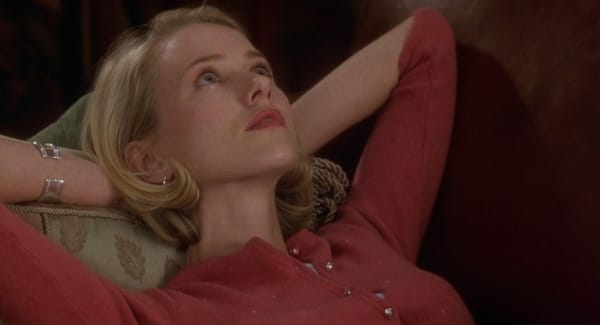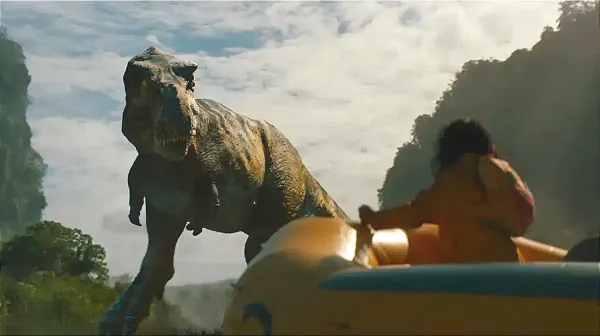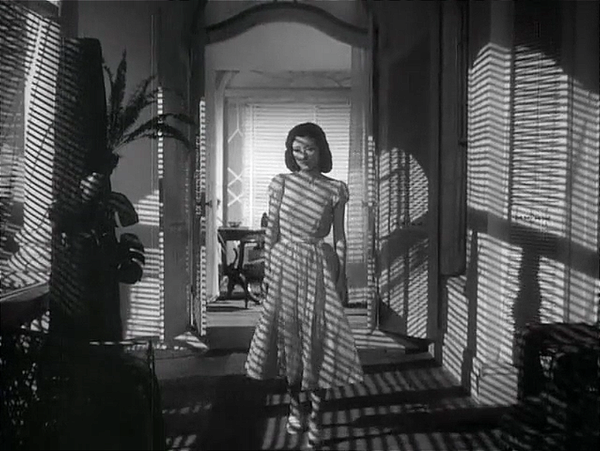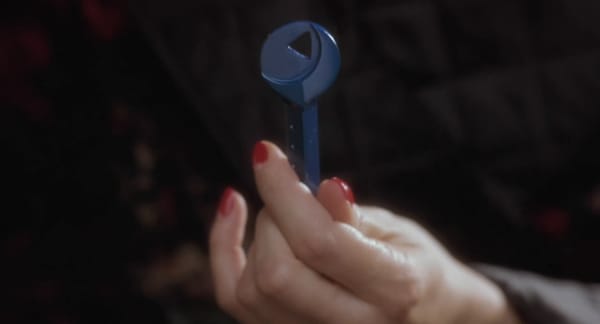What to Watch: “Louis Armstrong’s Black & Blues"
Plus: Reviews of "Aftersun," "Stars at Noon," and "The Good Nurse"

Note: Starting this week, selected Friday reviews will be available for paying subscribers only.
Documentary of the Week: “Louis Armstrong’s Black & Blues” (⭐ ⭐ ⭐ 1/2 , streaming on Apple TV+) — From music-critic-turned-director Sacha Jenkins, a long overdue assessment of one of the most important cultural figures of the 20th Century, a man who created an entire vocabulary of popular music and a still-extant grammar of instrumental soloing while remaining a public personality unique and irreducible. Armstrong has faded in the culture behind the musicians who owe him everything – Miles, Coltrane, Mingus, Monk – and Jenkins rightly treats this as a reclamation project, aided immensely by reels and reels of home audiotapes that bring us into Louis’ Queens, NY, home as he meets with friends and weighs in on the world with a candor he kept out of his public appearances. The 1960s rap on Armstrong as an Uncle Tom has long been debunked and the film lays it even more firmly in its grave; if anything, “Black & Blues” treats the artist’s stylized ebullience as a performative act of rebellion, a dirt-poor New Orleans kid’s way of staking a claim in a white world that would have nothing to do with him. Where Jenkins falls short is in examining the music – getting inside the solos and structures of the seminal Hot Five and Hot Seven recordings of the mid `20s, say, and helping a newcomer understand why they were so revolutionary then and remain so influential now. But that’s a small caveat. Watch this documentary especially if all you know of Louis Armstrong is “What a Wonderful World.” You can catch up with the rest of the grooves later.
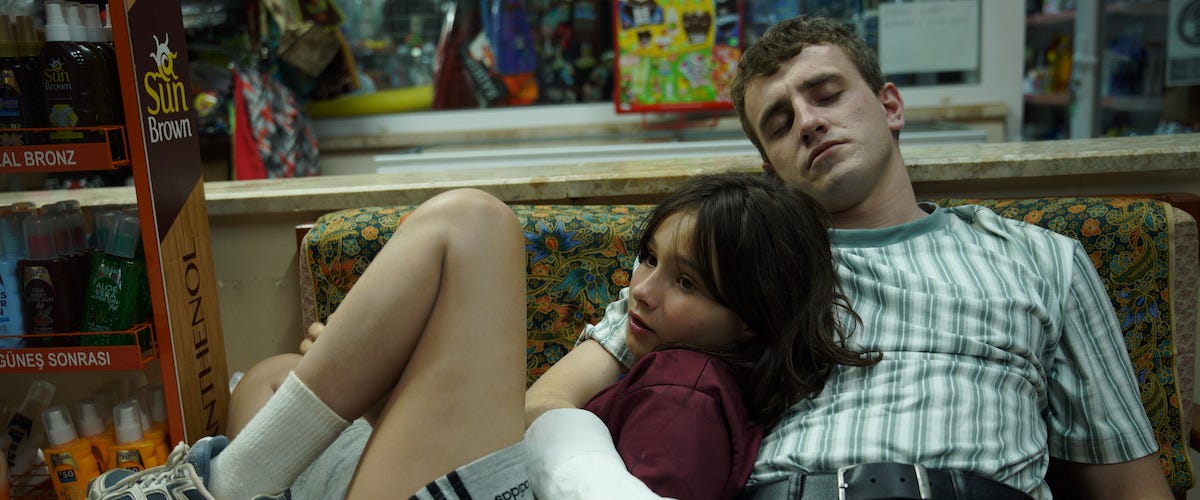
“Aftersun” (⭐ ⭐ ⭐ ⭐) opens in NY/LA theaters today, comes to Boston next week and – since it’s being distributed by indie distributor A24 – will arrive on streaming platforms whenever they have a mind to. It’s one of the best films of the year, an attentive, impressionistic memory play of a father-daughter vacation in the waning days of the 20th Century. (The staff of a beach resort performing “The Macarena” serves as a nice Proustian time stamp.) The daughter, Sophie (Frankie Corio) is 11; the father, Calum (Paul Mescal, the boyfriend in the miniseries adaptation of Sally Rooney’s “Normal People”) is estranged from Sophie’s mother, and this is his and Sophie’s first proper time together in a while. Time, in fact, hangs over the movie – the days ticking down before vacation is over, the adolescence Sophie sees coming in on the horizon, the aura surrounding Calum of a man whose time may have run out. Written and directed by first-time feature director Charlotte Wells, “Aftersun” is clearly personal and very affectionate, and it holds the mystery of a parent in its hands like a wounded bird. The narrative style is oblique and the visuals hover close to a child’s point of view. Wells often lets us see the dynamic between father and daughter through the lens of the video camera Calum has bought to commemorate the vacation, Sophie turning it on her father to ask the questions all kids want to know: Who are you? Who were you when you were my age? What did you think you’d be, and is it anything like who you are now? (Behind all those questions hovers the big one: Are you who I will become?) The glimpses we see of Calum – a cast on his arm, books about meditation on his night table, a late-night drunken sojourn – reveal a far more complicated man than he’s willing to show his daughter, no matter how hard she tries to pin him down in pixels.
“Aftersun” is scrupulously realistic with touches of surrealism on the fringes, including a dance floor of the mind where a grown Sophie (Celia Rowlson-Hall) tries to come to terms with the hazy, strobe-lit figure of her father. Wells curates a postcard-perfect period soundtrack – Blur’s “Tender,” Aqua’s “My Oh My,” Chumbawumba’s “Tubthumping” – that seeps into the action when Sophie warbles an adorably awful karaoke rendition of R.E.M.’s “Losing My Religion” at the Turkish resort where she and Calum are staying and then, later, when the David Bowie/Queen single “Under Pressure” swamps the film with longing. I was mostly a wreck by that point; whether you’ve lost a father early in life (as I did) or more recently (as my wife has), “Aftersun” stirs powerfully inarticulate emotions of what has been given and what is owed – what we had that we missed knowing we had and what we hold on to because it’s the only thing that’s left.
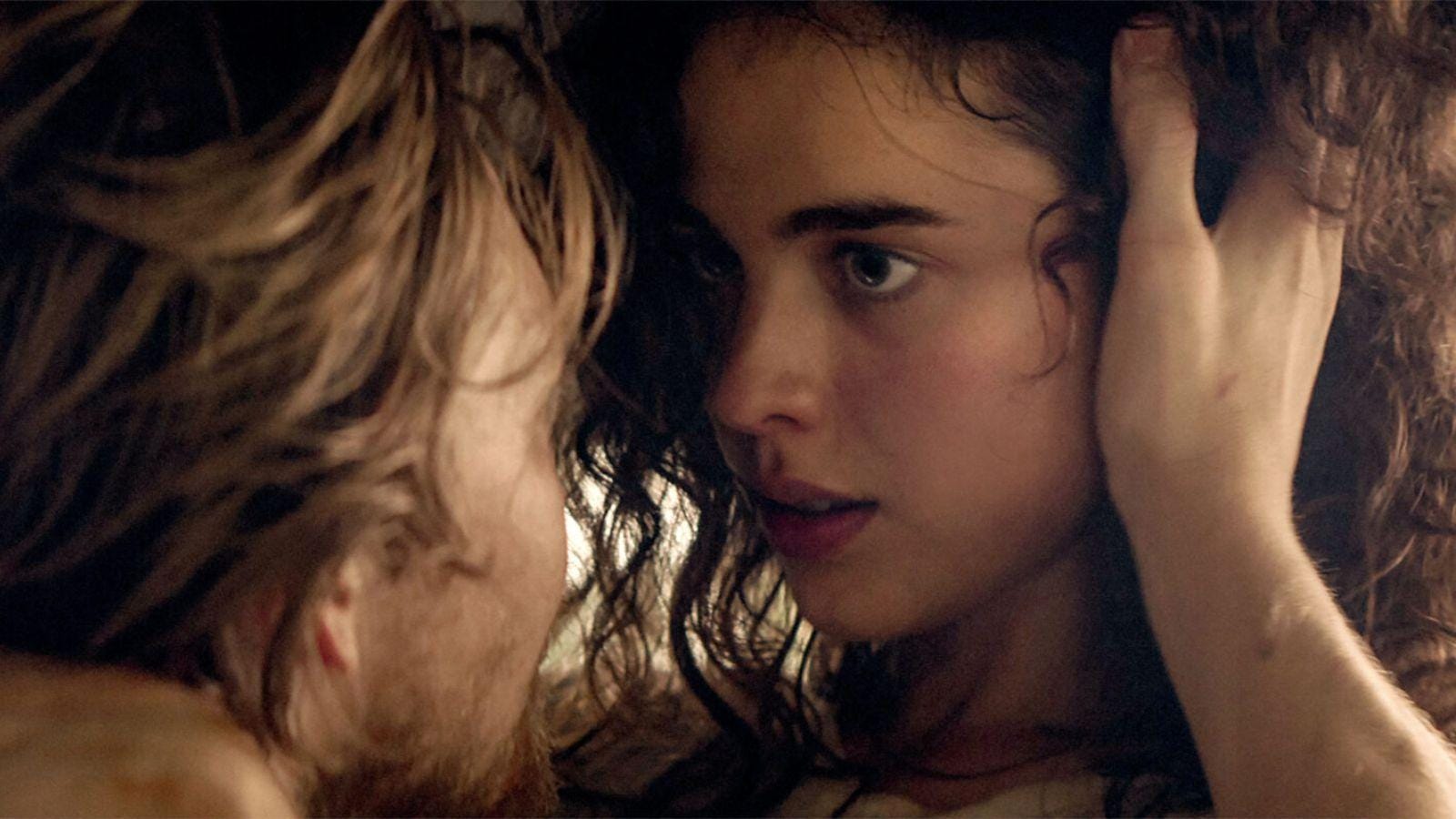
Lesser Claire Denis is still Claire Denis, and “Stars at Noon” (⭐ ⭐ ⭐, streaming on Hulu) is worth a look for the way the French filmmaker once again deconstructs genre into something languid, offbeat, and sensual. Here it’s the old “American abroad, in trouble and in heat” setup, with echoes of Paul Bowles’ “The Sheltering Sky,” Antonioni’s “The Passenger,” and Peter Weir’s “The Year of Living Dangerously.” This time, the American is Trish (Margaret Qualley, above), a freelance journalist down on her luck, and the simmering foreign setting is Nicaragua under vague civil strife. (Denis Johnson’s 1986 novel was set during the country’s struggle between the Sandinistas and the Contras; the film is more or less present-day, since people are wearing masks and toting laptops.) Having flaked out of too many assignments (John C. Reilly puts in a funny Zoom cameo as her editor), Trish meets Daniel (Joe Alwyn), a British businessman with some sort of shady deal going down, and we’re off to the bedroom. We’re not here for plot (and we certainly don’t get much), we’re here for atmosphere, and “Stars at Noon” depicts a slow, erotic circling of the drain as Trish’s and Daniel’s options dwindle and they strike out for the border. The film seems designed to try the patience of literal-minded viewers (or those who think heroines in movies should always behave sensibly), and you’re either here for the ride or you’re not. But Benny Safdie is a spark of mischievous life as a bland-on-bland CIA agent, and Qualley comes to life in a way she hasn’t in movies before, aside from her small, feral role as one of Charlie’s girls in “Once Upon a Time … in Hollywood” (and not counting her Emmy-nominated lead in the Netflix series “Maid”). She plays Trish as a complex, contradictory woman driven by hormonal instinct rather than by ambition or even common sense; we trail after her aghast, annoyed, but mesmerized. Qualley is still very much Andie MacDowell’s daughter, but she’s jettisoning her mother’s niceness for something much sharper and slyer. More, please.
Quick hit: “The Good Nurse” (⭐ ⭐, streaming on Netflix) is a case of talent stooping to conquer and ending up with a crick in its neck. Lookalikes Jessica Chastain and Eddie Redmayne star in the true story of Charles Cullen, a New Jersey nurse who murdered dozens and possibly hundreds of patients by injection during the 1990s; his motives remain unknown and he is currently serving life in prison. As directed by German writer-director Tobias Lindholm (“Another Round,” “A Hijacking”), the movie’s a procedural muted to the point of colorlessness, with restrained performances by the leads and a convenient villain in the hospital bureaucrats who covered up Cullen’s crimes to avoid getting sued. It’s watchable the way a long magazine article on the subject is readable: Creepy but oddly leached of drama.
Thoughts? Comments? Don’t hesitate to share.
If you enjoyed this edition of Ty Burr’s Watch List, please feel free to share it with friends.


